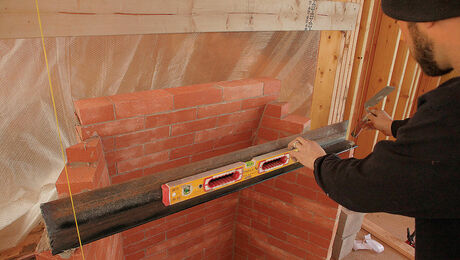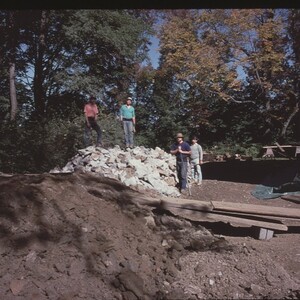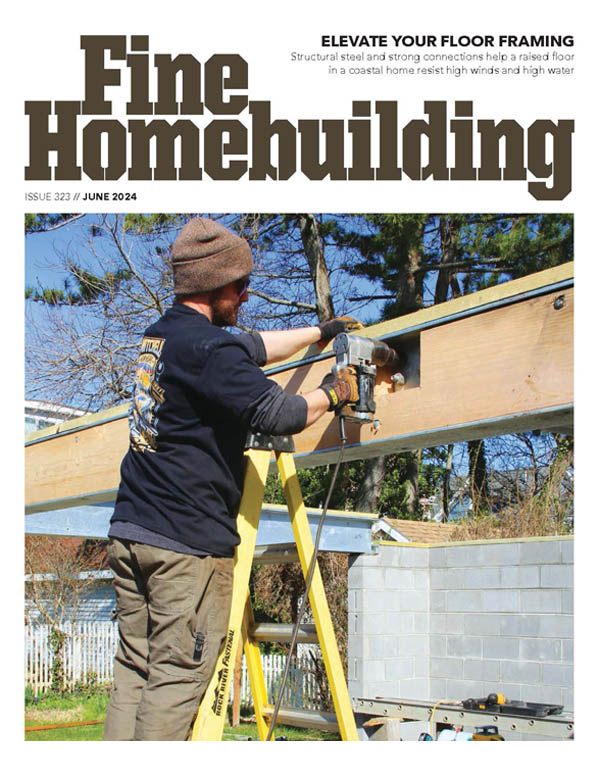Rigid Insul. and Water Absorption
Hi,
Am going to start installing rigid insulation over the clapboards of a rental property this week in prepartions for installing vinyl siding. Since it might be spring until I get to the siding and water absorption is a concern, I’m wondering which rigid insulation to use? Have heard that polyisocyanurate will aborb some moisture but not the DOW foam board.
Thanks, Jon


















Replies
Plain polyiso has high perm rating and will absorb moisture. Foil faced it is essentially zero perm.
Pink and blue foam board have a perm rating of around 1 per inch. perm rating of 1 is a vapor barrier.
I wouldn't put up polyiso unless it had foil facing. Pink and blue will be fine. In fact I frequently use pink foam as a rain shield as it is light and lasts forever.
MERC.
Should you distinguish between faced (impermeable) and unfaced (relatively impermeable) XPS? The latter recommended for basement insulation because it permeates just enough, whereas VB considered harmful for basement walls.... I've found this confusing myself....
WE're installing insulation inbetween 12x4 beams in a cathedral ceiling of a sunroom. (Probably and old uncovered porch from the 30's when it was a hunting lodge; they extended the roofline over it (and raised that one side of the roof 6" in the process) and used the 12x4's to match the modern wings they put on either end.)
Currently, on top of the 12x4's are (real) 2x6 tongue-in-groove boards, and on top of those are the shingles. Zero insulation. (and four 38x38" bubble skylights)
We're going to fill inbetween the 12x4's (they're spaced around 4' spans) with insulation and under that a drywall ceiling.
Does this idea work (not to scale):
______ <- shingles
====== <- 2x6's
++++++ <- 2" polyiso
+++#++ <- 2" polyiso with 2x4"'s between the 12x4's at
------ <- drywall intervals to serve as nail/screw surfaces
Looks like that would use around 4.5" of the 12" height of the beams.
Having blocking that doesn't contact the roof surface minimizes heat pathways to the outside. Most of the roof (which is around 9'x 25') would have 4" of polyiso, for a minimum R-value of 28-30ish. It will have 4 new flat low-e skylights a bit narrower but longer; area similar (maybe a smidge more), and new low-e sliders.
I assume from the comment about polyiso permability that we should have a vapor barrier between the polyiso and the drywall, either on top of it, or foil-faced polyiso. Correct? Any issues with roof temps? This is in a mixed-humid area (philly burbs, min temps in the 0 (rarely -5) range. Summer usually has 15-40 days over 90, generally mid-to-high humidity. Heating/cooling is a modern 13 SEER 2-stage heat pump, and we run the small modern (24K-ish BTU, 70+% efficiency) wood stove most of the time in the winter (burns out late at night).
Note: southeast-facing, gets direct sun in the summer from 8am til 10-11ish, then dappled until mid afternoon. Winter it gets sun pretty much all day modulo branch shadows. Does a nice passive solar job in the winter when it's sunny (4 large skylights, wall of windows, solid stone floor). Rather chilly in the winter with no sun... (we did put the small woodstove in that room for a reason).
Picture of room, it doesn't really show the ceiling much.
Perm is the ability to transmit moisture VAPOR, not transmit or absorb liquid water.
Commonly products that have a high perm rating will also pass water, but not is not alwasys the true.
For exmaple EPS (white bead board) will absorb water, but it still has a relatively low perm rating (but I don't know what it is). And DW with a PVA primer is rated as a Vapor retarder, but try using it on the outside.
XPS, with out the film, is used for dock floation. Now any of the foam programs come in a number of different density. But from my experience the dock foam is about the same or maybe even a little lighter in density than the sheathing foam sheets.
I would not see any problem with leavingit exposed. However, there might be some UV problems, but I doubt it. At least for a short term (1-2 years).
Have not really looked into the polyiso for it's characteristics.
The biggest concern I would have here is that no foam should be left exposed to UV rays of the sun for more than 30 days.
Welcome to the
Taunton University of Knowledge FHB Campus at Breaktime.
where ...
Excellence is its own reward!
Polyisocyanurate will deteriorate quickly when exposed to ultraviolet light. You can see it visibly change in just a few days. An entire winter will deteriorate the edges of all the panels.